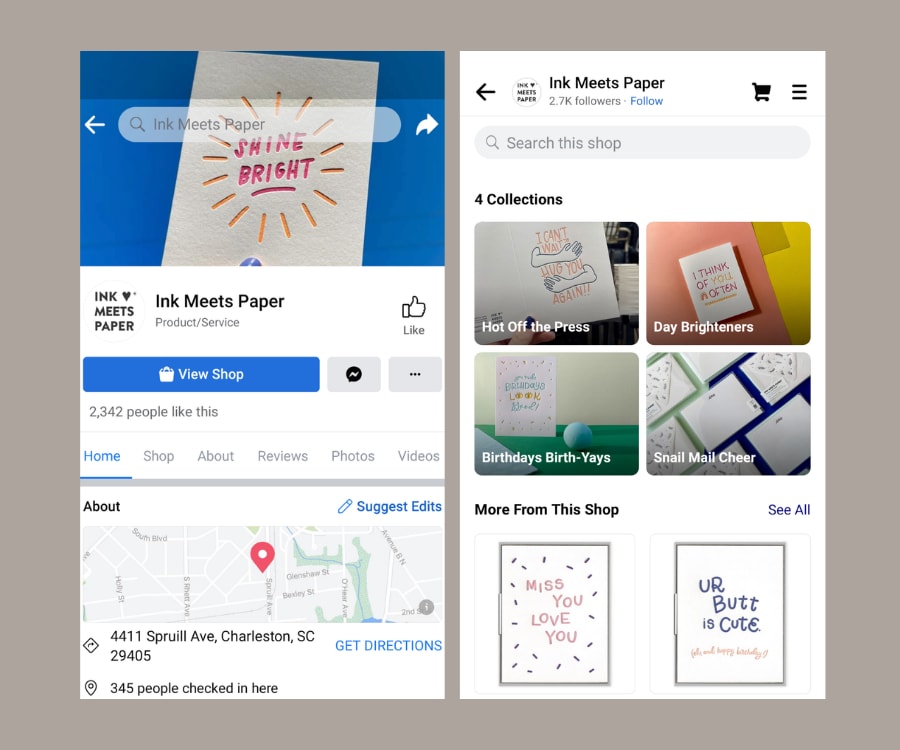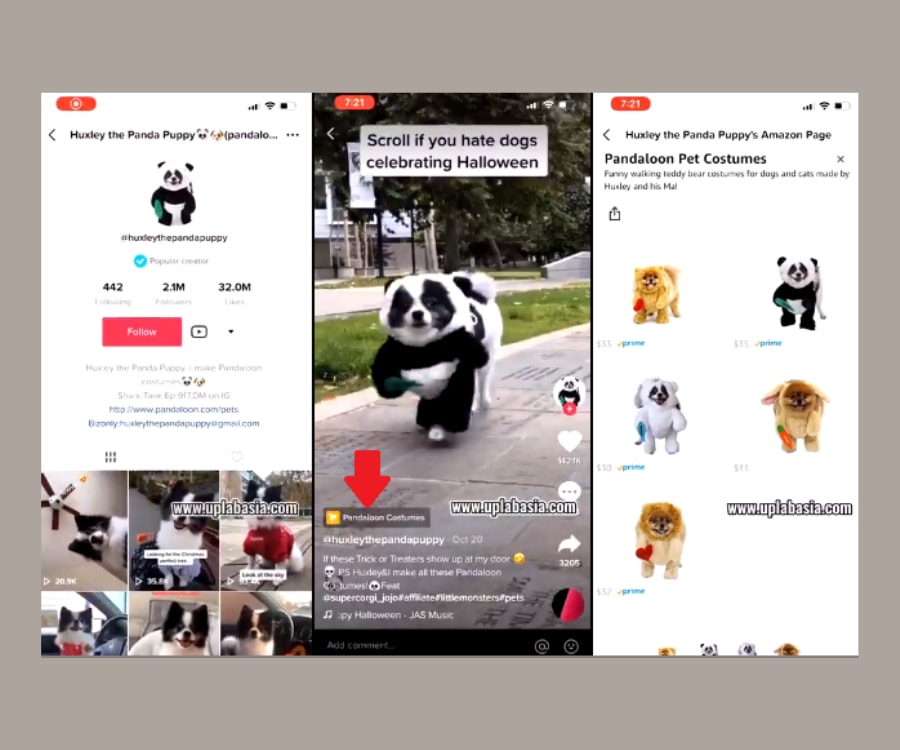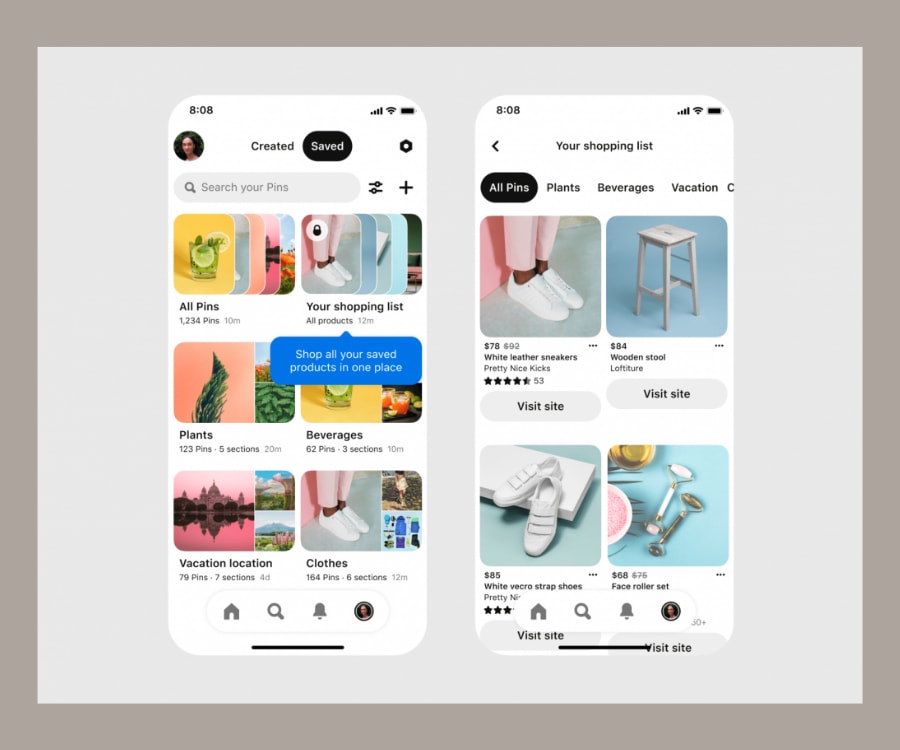Now and then, a marketing strategy comes along that changes the game and makes people filthy rich.
In the 1920s and 30s, radio ads went mainstream and made businesses millions overnight.
In the 40s and 50s, TV ads blew up products and brands to never before seen heights (with the help of Don Draper, obviously).
In the 2000s, internet PPC advertising changed everything we thought we knew about return on investment and personalization.
And now, in 2021, 100 years from the invention of radio ads, social commerce is set to become the next big revolution in the world of marketing and advertising.
If you're a business with products to sell, you can't afford to miss this opportunity. Social commerce is an $89.4 billion market right now.
What's more, social commerce is projected to grow to $604.5 billion in the next seven years (yup, that's Bitcoin-style levels of growth).
So, if you're curious about how to grab your slice of the rapidly expanding pie - we've got you. In this chapter, you'll learn social commerce 101. By the end, you'll know:
- Precisely what social commerce is
- 3 compelling reasons why you need to adopt social commerce
- What social commerce looks like in practice (and what platforms you can use)
- 5 social commerce best practices that'll put you ahead of the game
Sounds good? Let's jump in!
I. What Is Social Commerce: A Definitive Definition
Put simply, social commerce is about selling directly through social media.
We're talking about the entire process - from product discovery to consideration to checkout - happening on a social platform.
So, imagine you're scrolling your feed, and you spot a nice pair of bright pink socks that you love (It's okay, I don't judge). So, you click them, tap two or three more times, and next thing you know, they're on their way to your door.
The key with social commerce is that the customer never leaves the platform. Unlike traditional e-commerce, where you direct customers to your product page or landing page, everything is contained within the social media platform.
So, once a customer has bought something, they can go right back to stalking their ex's new partner, being a massive troll, or whatever it is that they usually do on social media.
Right now, several platforms offer social commerce tools - Facebook, Instagram, Tiktok, and Pinterest. However, everyone will likely want to get in on the action in the coming months.
Social commerce presents a massive opportunity to reach your customers frictionlessly on the platforms where they're spending lots of time.
II. Why You Must Not Overlook Social Commerce and Social Shopping
As an entrepreneur, you probably start by asking 'why?'. If something is going to take your time and energy, you need to know why you're doing it. So, with that in mind, let's explore the five key benefits of social commerce.
01. Low-Friction, High-Conversion Shopping
If you've been in the eCommerce game for a while, you know that friction is the enemy of conversions. Each additional step you add to the buying process is another opportunity to lose the sale.
Sure, it's strange to think that something as seemingly benign as a few additional lines on a checkout form can be the difference between a business thriving and failing - but that's the way of the eCommerce world.
Social commerce's biggest strength is that it lowers the effort required for customers to buy. No longer do shoppers need to navigate to your website in a janky browser provided by the app.
With social commerce, customers don't even need to input their payment information because their details are tied to their social media account.
See it. Click it. Buy it. Social commerce removes everything annoying about shopping online and sends conversion rates through the roof.
02. It's Growing Like Crazy
As we touched on earlier, social commerce is primed for hyper-growth. It's predicted to boom from around $90bn dollars to over $600bn in the next seven years - an eye-watering growth of almost 700%.
Few eCommerce marketing channels have seen such meteoric rises in popularity, and at the time of writing, none are locked and loaded to expand in lockstep with social commerce.
Seriously, you know something is shaping up to change the game when giant platforms like Facebook, Instagram, and Pinterest make moves to add it to their playbook.
Just like any other ecommerce marketing approach, to become a leading figure, early adoption is vital. Mastering social commerce now will allow you to outshine competitors down the line.
03. Millennials & Gen Z Galore
If your ideal buyers are aged 18-34, they're colloquially known as 'masters of the scroll' (okay, I just made that up now). But, for real, this demographic spends buckets of time on social media, and you better believe they're ready to shop.
Almost 50% of social media users in this age bracket purchased something on social media in 2019, and that figure is trending up. In essence, social media is becoming a modern mall.
What's more, this demographic is typically where consumers see the most significant increase in their buying power, meaning they've got money to burn (if we don't spend it all on avocado toast).
An Instant Focus Group
Launching a new product and want to know what your audience thinks? With social commerce, you can put your products out in the world and get instant feedback from buyers.
With your catalog on social media, your audience can discuss and review products. You can run polls to decide which products you should develop.
The social media platforms also come with detailed analytics that'll help you better understand your customer's behavior and interests. Plus, you can also chat with shoppers via comments and DMs to build more personal relationships.
III. Examples of Social Commerce In Real-Life
Now that you know what social commerce is and how it can benefit your business, let's look at how it works in practice - starting with the top four social commerce platforms today:
01. Facebook Social Commerce Example
Chances are you've got a Facebook business page that you use to share content with your audience and post updates about your business.
But did you know that Facebook has a social commerce tool called Facebook Shops? Facebook Shops allow you to customize the look and feel of your store to create a unique on-brand merchandising experience.
You can import products directly from your eCommerce site or build collections from scratch directly on Facebook.
Stationery retailer 'Ink Meets Paper' leverages Facebook shops to create a smooth shopping experience right on their brand's page:

See how easy it is to land on their page, hit 'View Shop,' and then start browsing their products?
In the Ink Meets Paper Facebook shop you can buy products without ever leaving Facebook's ecosystem. Of course, you have the option to send customers to complete checkout on your website if you'd prefer.
Facebook lets businesses create test shops, so you can play around with the idea of making a shop before jumping in with a big commitment.
02. Instagram Social Commerce Example
Instagram's visual nature makes it the perfect place to discover new products. So, it's no surprise that over 60% of people say they use it to research purchases.
Using Instagram's social commerce tools, you can get your products out there so eager buyers can discover them with ease. Of course, Instagram's most attractive feature is its shoppable posts.
Since Facebook owns Instagram, you'll need to set up a Facebook Shop first. Instagram pulls the data from your Facebook Shop over to its platform.
Just look at how Jewelry brand Cluse uses their feed as a virtual 'shop window' that entices their audience to buy.

All that shoppers need to do is tap on the products in their posts, and they're directed to Cluse's Instagram store, as you can see in the image on the left here:

Instagram also lets you easily engage with your audience via live streams, stories, direct messages, and comments to foster brand loyalty and win more purchases.
For example, Cluse regularly hosts collaborations with influencers to promote their products, reach new audiences and keep their brand at the forefront of their customer's minds.
At the time of writing, US-based retailers can leverage Facebook Pay to checkout on Instagram, making for an uber-slick shopping experience. Retailers outside of the US can still use Instagram shops, but you'll have to direct users to your site to complete the transaction for now.
03. TikTok Social Commerce Example
TikTok's popularity has been skyrocketing over the past year - and it's not just teenagers using the platform.
As TikTok is the newest player in the social commerce space, it offers the least amount of tools we'll cover today.
However, TikTok is rapidly rolling out new shopping features, not least a new partnership with Shopify in 2020.
Like Instagram, TikTok's primary attraction is its visual appeal, making it the perfect place to present physical products you're selling.
The thing with TikTok is that your ads need to look native. TikTok's younger than average user base has grown up with the internet and is wise to the ways of digital advertising. Aka, they don't like being hard sold to.
Huxley, the Panda Puppy, has 2.1 million followers and uses its massive reach to promote cute pet costumes.

Here you can see a trial version of how the customer journey would be - from the brand's feed to a specific post, to the CTA, and then to the in-app shop.
Another exciting way that brands are using TikTok is by creating challenges. One example comes from Mercedes Benz. This challenge engaged users by asking them to re-envision the iconic Mercedes logo.
The challenge went viral and netted over 180M+ video views while adding a cool 30k subscribers to the German car maker's account.
04. Pinterest Social Commerce Example
If you're not already pinning your products, now is the time to start. Seriously, eight out of ten Pinterest users have bought products based on pins from brands they follow.
While Pinterest doesn't offer in-app checkout just yet, it's still the place to be if you want to get free exposure for your products.
In terms of purchase intent, Pinterest is a goldmine - just under 90% of the Pinterest users are on the platform to get shopping inspiration.
Pinterest allows you to create 'Product Pins,' which are displayed on your brand's Pinterest Shop. Overall it's a similar experience to Instagram's Shop.
Pinterest's UI is super clean, and the option for users to save pins in collections means that they'll see your products multiple times, boosting the odds they'll buy it.

IV. 5 Best Social Commerce Practices for Your eCommerce Business
Okay, by now, a few social commerce neurons should be firing in your brain. Before we move on to the next chapter, let's take a broad overview of the best practices for social commerce.
Be Social (Seriously)
Excuse me for stating the obvious, but it's amazing how many brands miss the social part of social media.
When it comes to social commerce, you can't just throw up your product catalog and repeatedly pound your audience with promotions and offers.
Remember, with the possible exception of Pinterest, people aren't necessarily looking to shop on social platforms (at least not yet).
People use social media to have fun, kill time and put off doing that thing they said they'd do two hours ago.
To win at social commerce, you have to be prepared to entertain, engage and educate your audience to build enough trust before they'll buy from you.
To paraphrase one of the world's most intense men Gary Vee, It's about giving, giving, giving before asking for the sale.
Listen Closely
In the old days, you'd have to pay a consumer research agency big bucks to get a peek into your audience's thinking.
Nowadays, you've got a front-row seat to look at them via your social media profiles. There are lots of fancy tools to monitor social media mentions like Hootsuite or AgoraPulse.
However, you can also get a brilliant idea of your audience's tastes and opinions by simply asking them. Use Instagram surveys to figure out what customers want.
Also, monitor comments and DMs for trends about what may interest your ideal shoppers most and what doesn't seem to resonate at all.
Create Native Content
Knowing how to create the best kind of content for each channel is critical.
For example, if you run a Facebook ad on TikTok, I'd bet my bottom dollar it would bomb. Similarly, if your Instagram posts look like billboard ads, you're in trouble.
Using native content (i.e., content that looks like it belongs naturally on the target platform) means that your audience won't feel like they're being advertised to.
In general, you can't go wrong with quality user-generated content. This is because it looks native to the platform and also adds powerful social proof to your brand.
The bottom line is, when you align your content with what works best for each platform, you'll see your engagement rates rise, and your posts will perform better.
Minimize Friction
We've already mentioned how friction and conversions don't see eye to eye.
However, it's worth noting again because, in social commerce, the margin for error is tiny.
Think about it - if a customer gets the urge to buy something while browsing social media, there's a super high chance they'll back out if you send them to the wrong page.
The energy to start trying to find what they were looking for just isn't there because the shopper probably didn't initially intend to buy whatever you were advertising.
Similarly, if you're unable to answer frequently asked questions quickly via your social media support channels, you'll lose a whole bunch of potential sales.
Some platforms, like Facebook, allow you to set up chatbots that can help guide customers seamlessly along the buyer's journey.
Whatever you do, ensure that your social commerce experience is as streamlined as possible so you'll maximize your conversions and revenue.
Price Appropriately
You can sell just about any kind of products via social commerce - everything from vegan make-up to out-there Halloween costumes - but you'll have a much harder time selling products with a high price tag.
The bulk of social commerce sales consists of impulse buys. Dropping $40 on a new sweater doesn't involve the same risk as randomly buying a high-end Rolex.
The risk of high-priced products is a deterrent and usually requires a different marketing approach.
Shopify recommends that merchants stick to items priced below $70. Obviously, this is just a guideline - but less than $70 represents the sweet spot where the average consumer doesn't spend time thinking about the purchase.
Wrapping Up Social Commerce 101
Social media has radically altered the way brands and consumers interact. Social commerce is the latest manifestation of that changing relationship.
There's no better time than now to lean in and master the art and science of selling through social platforms. Seriously, the sooner you start experimenting with social commerce, the faster you'll reap the rewards down the line.
By now, you understand the basics. But over the coming chapters, you'll learn proven strategies and tactics to catapult your brand via social commerce across all platforms. So, let's keep reading!
Author Bio:
This chapter was written by Fintan Meagher. Fintan is a content marketer at ReConvert. ReConvert is the easiest way to add thank you page upsells, cross-sells, surveys, and more to your Shopify store.
